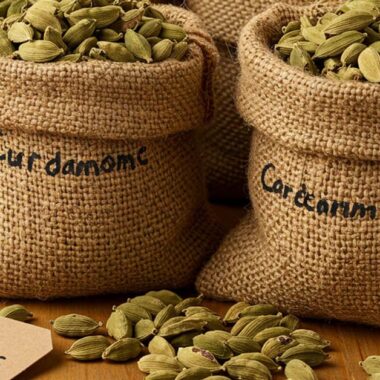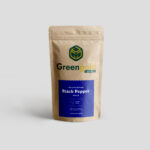Cardamom, known as the “Queen of Spices,” is a high-value crop with prices that fluctuate due to various global crises. Events like economic downturns, climate change, pandemics, and political instability can significantly impact production, export, and demand, leading to volatile pricing. Let’s explore how global crises shape the cardamom market! 🌿📊
⚠️ 1. Economic Recessions & Financial Crises
✔️ Luxury Spice Demand Drops – Cardamom is a premium spice, making it one of the first items consumers cut back on during economic downturns.
✔️ Currency Fluctuations Affect Trade – Exporting countries like Guatemala and India face losses when their currency weakens against the U.S. dollar or Euro.
✔️ Reduced Imports – Countries like Saudi Arabia and the UAE, major importers, reduce purchases during financial instability.
💡 Example: The 2008 Global Financial Crisis caused a temporary dip in cardamom prices due to lower demand in luxury markets.
🌱 2. Climate Change & Extreme Weather
✔️ Droughts & Unpredictable Rainfall – Cardamom requires a humid, tropical climate. Droughts in India, Sri Lanka, and Guatemala have led to crop failures.
✔️ Fungal Infections & Pests – Rising temperatures increase the spread of fungal diseases, reducing yields.
✔️ Storms & Landslides – Heavy rains and landslides in India’s Western Ghats have periodically destroyed plantations.
💡 Example: In 2019, floods in Kerala, India, caused massive crop damage, leading to a price surge in the global market.
🦠 3. Pandemics & Health Crises
✔️ Disruptions in Supply Chains – The COVID-19 pandemic (2020-2021) halted production, transportation, and exports.
✔️ Labor Shortages – Lockdowns prevented farmers and workers from maintaining plantations, reducing yields.
✔️ Surge in Demand for Medicinal Uses – Cardamom is believed to boost immunity and respiratory health, increasing demand during the pandemic.
💡 Example: In 2020, cardamom prices spiked as consumers bought more spices and herbal remedies during the COVID-19 outbreak.
🌍 4. Geopolitical Tensions & Trade Restrictions
✔️ Export Bans & Tariffs – Political tensions between major exporters and importers affect global trade.
✔️ Sanctions & Trade Wars – If major importers (e.g., Middle East or Europe) face trade restrictions, demand for cardamom drops.
✔️ Shipping Disruptions – Conflicts in key shipping routes (e.g., the Red Sea or Panama Canal) delay deliveries, increasing costs.
💡 Example: The Russia-Ukraine war (2022–present) led to a rise in shipping costs, indirectly affecting spice prices globally.
⛽ 5. Fuel Price Increases & Transportation Costs
✔️ High Fuel Prices = Expensive Exports – Since cardamom is grown in remote areas, increased fuel costs make transport more expensive.
✔️ Air & Sea Freight Charges Rise – Countries that import cardamom via air or sea (like Europe & the U.S.) pay higher costs when oil prices surge.
✔️ Inflation Raises Consumer Prices – Higher shipping fees increase final retail prices, making cardamom more expensive in stores.
💡 Example: The oil price surge in 2022 led to higher transportation costs, pushing cardamom prices up globally.
📊 Recent Cardamom Price Trends & Future Outlook
🔸 Shortages in Guatemala & India have kept prices high.
🔸 Climate change remains a major concern for long-term production.
🔸 Global demand for organic cardamom is increasing, affecting pricing.
🔸 Supply chain disruptions continue to impact exports.
💡 What’s next? If global crises persist, cardamom prices may remain volatile, with occasional price spikes.
🛍️ Want Premium Cardamom? Buy Now!
Get the best fresh, high-quality cardamom at Greengold Guide! 🌿













